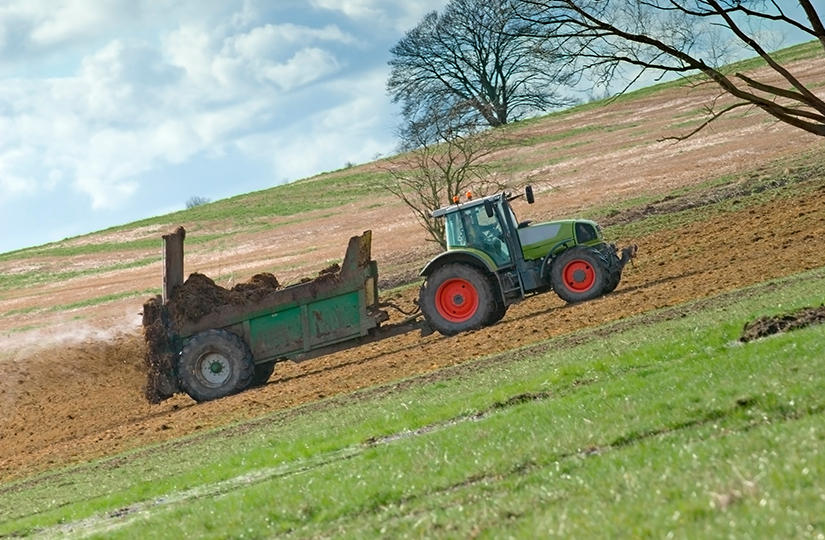Relief as autumn muck spreading rules clarified
Defra Secretary of State George Eustice has published updated guidance on the Farming Rules for Water which gives the green light for farmyard manure, slurry and biosolids to continue to be spread in the autumn and winter.
The Farming Rules for Water have been a huge area of concern for farmers in England since last year, when the Environment Agency (EA) issued guidance which indicated that spreading manures in the autumn ahead of winter cereals was contrary to the rules. While the EA did allow some autumn spreading in 2021, it warned that this was just a temporary measure, and the rules were likely to tighten this year.
However, Defra has been forced to examine the issue in light of the pressures caused by escalating fertiliser costs and problems with fertiliser availability. It has just issued an update which clarifies when farmers can use slurry and other manures during autumn and winter.
Planning spreading
Farmers will have to be able to demonstrate that they have a nutrient management plan which considers the expected crop nutrient requirements based on RB209 guidance or a FACTS qualified adviser, the soil analysis of each field and the nutrient content of the manure.
They must be able to prove that any applications are proportionate and there is a soil and crop need, although this calculation can now be based on the annual crop cycle and not just the immediate need of the crop.
The rules on how much manure can be applied will differ depending on whether spreading a manure type that is considered low in Readily Available Nitrogen (RAN) – for example, FYM from a suckler cow enterprise – or a manure with a high RAN content, such as slurries.
Low RAN manures – which have a RAN content of less than 30% nitrogen – can be spread at any time without any application limit, so long as the wider rules on not exceeding soil and crop need are met and steps are taken to avoid diffuse pollution.
For high RAN manures, which pose a higher nitrate leaching risk, there will be an application rate limit of 30 cubic metres/ha within the following time periods and no repeat applications will be allowed for at least 21 days. Outside of the time periods there will be no application rate limit, so long as it does not exceed crop and soil need.
Time periods when applications rates apply for high RAN organic manures will apply:
Soil Type – Sandy or shallow soils
Grassland: 1 Sept to the end of February
Tillage land: 1 August to the end of February
Soil Type – All other soils
Grassland: 15 October to the end of February
Tillage land: 1 October to the end of February
Enforcement
The new guidance says that the Environment Agency will generally prioritise giving advice and guidance before taking enforcement action.
However, farmers should not see this development as meaning they can be complacent. The new rules will remove some logistical challenges, as well as enabling farmers to continue to improve their soils. But the focus on preventing water pollution remains a clear priority for government.
Defra is currently consulting on legally binding targets, following the passing of the Environment Act, and one of these is to reduce nitrogen, phosphate and sediment pollution into water from agriculture by 40% by 2037, compared with a 2018 baseline.
Urea update
In addition to the statement on the Farming Rules for Water, Defra has announced that it is delaying any changes to rules on the use of urea fertiliser. A consultation was published last year which had several options, including an outright ban, a closed spreading period and a requirement to treat all urea with an inhibitor. New rules were due to come in this April, but the changes will now not be introduced until April 2023.
Defra has also indicated that it has ruled out the introduction of an outright ban – which is good news – instead saying that when restrictions are introduced, they will include the use of ammonia inhibitors.
Industry estimates are that only about 20% of the mineral fertiliser used in the UK is urea so the amount used, compared with ammonium nitrate, is relatively small. This means the impact of this change will be limited, but it does at least remove a potential complication.
Wider challenge
We welcome the news that the government is taking the issue of fertiliser availability seriously, with a roundtable group chaired by the Farming Minister Victoria Prentis having been tasked with coming up with further solutions.
Yet it is important to acknowledge the scale of the challenge which the industry faces. The Minister has spoken much about farmer’s reducing their reliance on manufactured fertilisers and greater use of organic manures and nitrogen fixing crops to build soil fertility. But it should be acknowledged that these are far from a holy grail – otherwise farmers would have no need for manufactured fertilisers in the first place!
If rates of fertiliser applications reduce due to economics or lack of supply, then yields will be significantly lower; there is no escaping that fact. This will have an impact at an individual farm level, requiring greater acreages to be farmed to offset fixed costs, but also at a macro level where we will see the country’s food production fall, at a time when global consumption of food is increasing, and stocks are falling.






